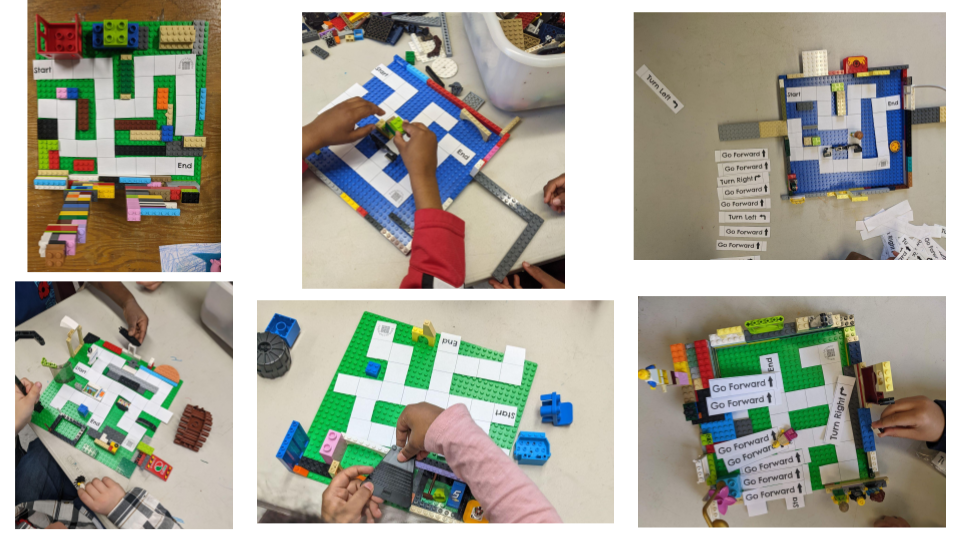The beginning of December marked Computer Science Education Week. It was our chance to continue deepening our Computational Thinking skills with unplugged and online activities. The kindergarten students were learning to communicate an understanding of basic spatial relationships while students in grades 1 to 5 were learning to solve problems and create computational representations of mathematical situations using coding concepts and skills.
Throughout the year, kindergarten students have been learning to communicate basic spatial relationships – on top, beside, to the left of, to the right of, ahead, etc. They’re picking it up quickly and that helped us when we started working on our Lego Mazes. Students started by building their mazes on Lego Baseplates and then used the arrows to help move their minifigures from the start to the end of the maze. Some groups realized that there were different ways to make their way through. Having this practice proved helpful when they had the opportunity to try a couple of online activities – Code Monkey Junior and Beaver Achiever.
The grade 1s and 2s were pretty curious about the Lego Mazes and tried their hand at using the arrows to move their way through the mazes that the kindergarten students created. It took some practice but in groups, they were able to get the job done. Next, using images on a grid, students were tasked with coding a peanut butter and jelly sandwich. They had to consider the steps that are involved in creating the sandwich and then determine the sequence of events as they moved from one place to the next, gathering the materials and making their sandwich. This practice was also helpful for them for their online activities – Code Monkey Junior and Beaver Achiever.
The grades 3, 4, and 5 students were all about solving problems in Minecraft using code.org and Minecraft for Education. Starting out in code.org gave students the opportunity to have some guided practice and when it came time to work in the Minecraft for Education space, those skills came in handy as students coded their way to escape the mysterious mansion. It was great to see students collaborating with each other and finding different ways of coding their way out of challenges. I found it particularly interesting that there were some students that were able to catch mistakes in the code of their peers even before running it. The opportunity to debug the code in Minecraft for Education was really great for some to see how changing small things could result in big changes overall.
I’m still working on ways of helping students to explicitly understand computational skills – algorithmic thinking, abstraction, decomposition, generalizing and patterns, evaluation, and logic. While Computer Science Education Week only lasts one week in the year, we’re excited that the learning is ongoing and that the skills we are learning are transferable to other subject areas as we consider ways of solving problems.

